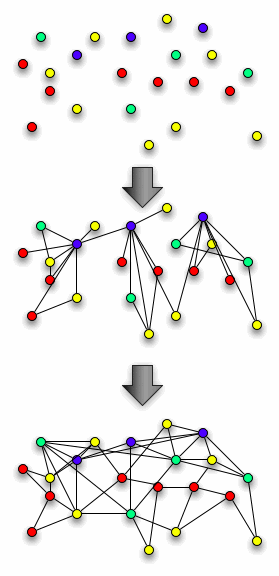I’ve been arguing for a while that we need to take a broader picture of learning, that the responsibility of learning units in the organization should be ensuring adequate infrastructure, skills, and culture for innovation, creativity, design, research, collaboration, etc, not just formal learning. As I look at those different components, however, I wonder if there’s an overarching, integrating viewpoint.
When people go looking for information, or colleagues, they have a problem to solve. It may be a known one with an effective solution, or it may be new. It doesn’t matter whether it’s a new service to create, a new product to design, a customer service problem, an existing bug, or what. It’s all really a situation where we need an answer and we don’t have one.
We’ll have some constraints, some information, but we’re going to have to research, hypothesize, experiment, etc. If it’s rote, we ought to have it automated, or we ought to have the solution in a performance support manner. Yes, there are times training is part of the solution. But this very much means that first, all our formal solutions (courses, job aids, etc) should be organized around problem-solving (which is another way of saying that we need the objectives to be organized around doing).
Once we go beyond that, it seems to me that there’s a plausible case to be made that all our informal learning also needs to be organized from a problem-solving perspective. What does that mean?
One of the things I know about problem-solving is that our thought processes are susceptible to certain traps that are an outcome of our cognitive architecture. Functional fixedness and set-effects are just two of the traps. Various techniques have evolved to overcome these, including problem re-representation, systematicity around brain-storming, support for thinking laterally, and more.
Should we be baking this into the infrastructure? We can’t neglect skills. Assuming that individuals are effective problem-solvers is a mistake. The benefits of instruction in problem-solving skills have been demonstrated. Are we teaching folks how to find and use data, how to design useful experiments and test solutions? Do folks know what sort of resources would be useful? Do they know how to ask for help, manage a problem-solving process, and deal with organizational issues as well as conceptual ones?
Finally, if you don’t have a culture that supports problem-solving, it’s unlikely to happen. You need an environment that tolerates experimentation (and associated failure), that support sharing and reflection, that rewards diverse participation and individual initiative, you’re not going to get the type of pro-active solutions you want.
This is still embryonic, but I’m inclined to believe that there are some benefits from pushing this approach a bit. What say you?
